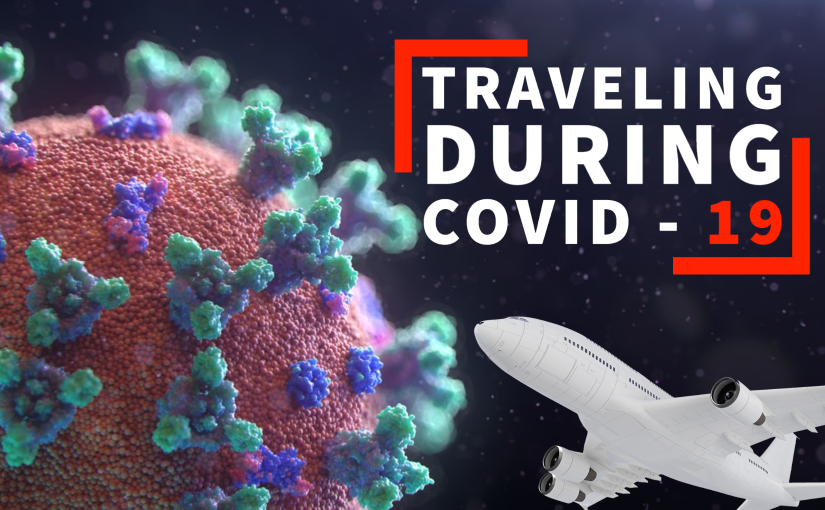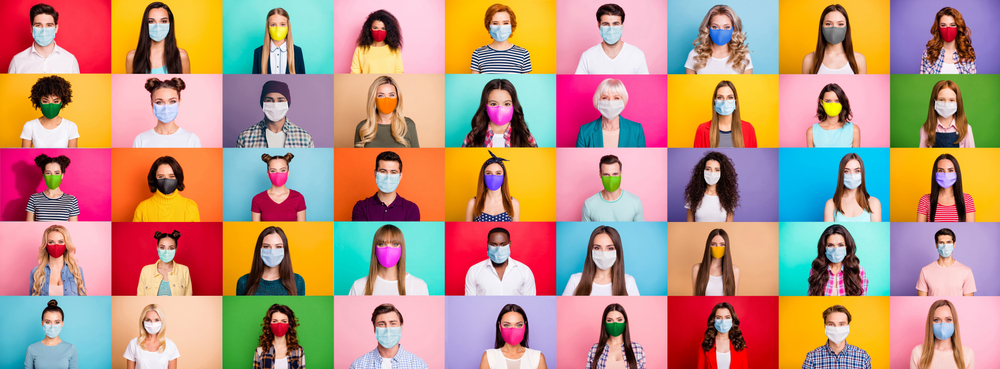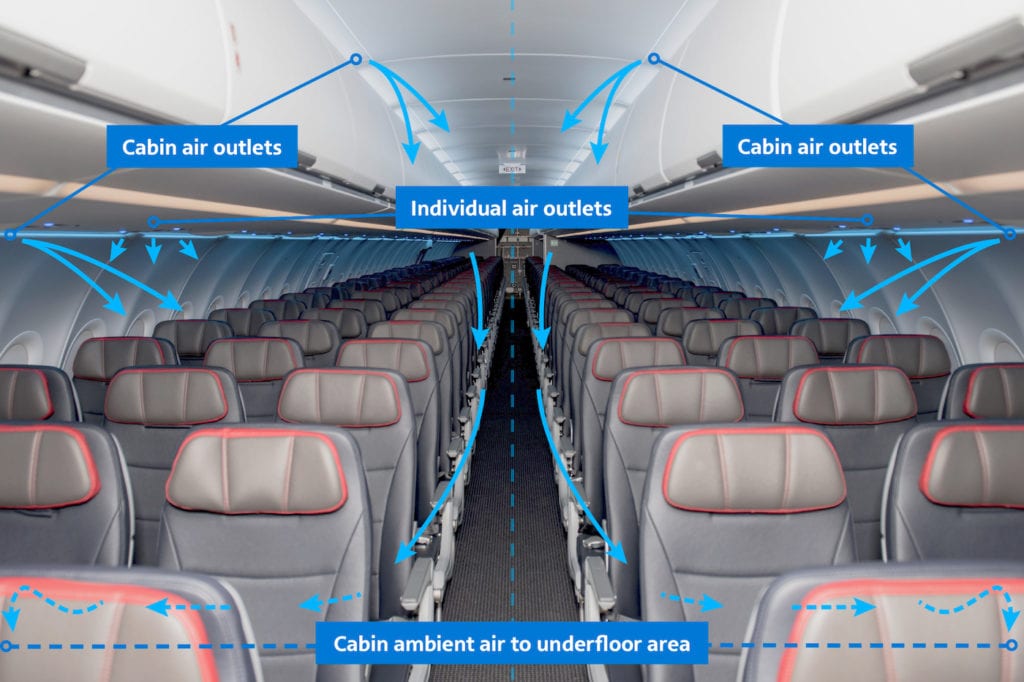Traveling During COVID-19: How the Industry is Changing

It’s been months since the world has been impacted by the coronavirus, and the pandemic changed everything from how we shop for groceries or exercise to how we work or travel. People have found themselves building new home offices, getting their groceries delivered to their homes, and following online workout routines to adapt to everything that’s going on while still trying to continue living their lives.
One industry that has been impacted the most because of COVID-19 is the travel industry; for a while in the beginning things came to a complete standstill as flights were grounded and airports were closed. Months later, many countries are still not allowing inbound tourism; the U.S. has banned almost all non-U.S. citizens who were recently in certain countries such as Brazil, China, or parts of Europe. Similarly, nearly all of Europe prohibits those who have visited the U.S. from entering as well.
Air travel within the United States has opened back up though approximately 18 states still have a quarantine requirement for travelers from out of state. For example, those who are planning to go to Hawaii need to allocate an additional two weeks in the beginning for quarantine. Who would want to fly all the way to Hawaii just to be trapped in their hotel room for two weeks? Such restrictions have really put a damper on the travel industry, especially hotels and air travel, while alternatives such as car rentals and home-sharing applications have shown steady sales post initial drop as people opt for road trips and local staycations instead.
To help boost sales, airlines have begun implementing an array of measures to ensure the safety of their employees and passengers. They also hope that the measures they’ve put into place will give people the peace of mind they need to purchase tickets and boost sales. Here’s a more in-depth look at what airlines and airports are doing in hopes that you’ll feel more comfortable to fly with your friends and family.
Masks, Masks, Masks

Masks, Masks, Masks
Not only in airports and on airplanes, but masks are also a requirement in most public places now. Airports and airlines are now requiring masks to be worn at all times and in all spaces such as duty-free shops, airport lounges, check-in areas, baggage claims, etc. The use of masks, alongside other measures such as washing your hands, has proven to limit the spread of the virus amongst people in enclosed spaces. Initially, passengers who requested to be exempt from the rule because of health reasons were allowed but now many airlines have retracted that offer, only accommodating those who can wear a mask at all times. Delta, as well as other airlines, have already banned hundreds of fliers for failure to comply with their rules. Enforcing the use of masks for all employees and passengers over the age of two is just the first step that the airline industry has taken toward a safer and more prosperous future.
Social Distancing

Figuring that a plane with fewer passengers is better than a plane with no passengers, airlines such as Delta, United, and American are now spacing out passenger seating. As research continues on COVID-19 and how it is spread, one thing that the CDC and several other private studies have found is that a space of six feet between people can reduce the transfer of the virus drastically. This would have been difficult had people been packed into each and every seat like before. But to prove that you can be somewhat socially distant while flying, airlines began blocking out middle seats and spacing out passengers as much as possible to prevent transmission. You can even take matters into your own hands as airlines are allowing passengers to pay an additional amount to block seats next to them.
Air travel is down over 90% compared to just a year ago and there are only about 17 passengers on an average domestic flight – this is extremely low compared to the usual average of about 100 passengers per flight. According to Airlines for America, less than 1% of flights occupy a 90% – 100% capacity at the moment.
Disinfecting Every Surface

Disinfecting Every Surface
Airlines have made the well-being of their passengers, flight crew, and staff their top priority. The obvious first step is to prevent those who are unwell from boarding the plane in the first place, which is done alongside the use of masks and social distancing, but one of the most important initiatives the airline industry has taken to fight COVID-19 is to create the healthiest, safest, environment for flying possible.
Working with health and regulatory organizations as well as universities and other private research companies, airlines are trying to identify additional steps they can take to prevent the spread of the virus. They’ve created a comprehensive approach by first identifying all of the surfaces passengers and crew come into contact with, from the walls on the way to your seat to the fold-down dining table you share with the passengers who flew before you. Then, they refer to public health authorities such as the CDC or WHO to test and approve the most effective disinfectant to use on all surfaces. The process of cleaning and disinfecting is done thoroughly after each flight and in every area you may come into contact with. And lastly, all information and research are shared throughout the industry from other airlines to airports so that you have a safe travel experience from beginning to end.
Hospital-Grade Air Filtration Systems

Hospital-Grade Air Filtration Systems
Creating a healthy airflow was one of the first problems that airlines wanted to address when reopening amidst a pandemic. For many, this didn’t turn out to be a problem at all as studies concluded that filters in a modern aircraft ventilation system are similar to those used in hospitals. Not only do these systems help prevent the spread of the coronavirus by removing over 99.9% of viruses, studies even went on to show that the chance of spreading and contracting a virus on even a packed flight is extremely low thanks to these hospital-grade air filtration systems.
Most airplanes such as a Boeing claim that their systems minimize the spread of airborne contaminants because of the following reasons:
- The air filtration system that returns air to the cabin uses High Efficiency Particulate Air (HEPA) filters that capture more than 99.9% of bacteria and viruses.
- The volume of cabin air is exchanged every two to three minutes, meaning that the air that’s circulated back to you is filtered often.
- The airflow in a cabin, which is primarily from ceiling to floor in a circular pattern, compresses airborne particles and pushes them down toward the bottom of the plane where the filters are waiting. This is an important statement as lots of new research shows that the virus is airborne and that particles can be found floating in the air.
Researchers at Boeing say the airflow system combined with the design of the cabin creates the equivalent of more than seven feet of physical distance between each passenger – even on a full flight.
On-site Rapid Testing

On-site Rapid Testing
In hopes of comforting travelers over getting on a plane, airlines and airports are now offering on-site rapid testing. The rapid test comes in the form of a nasal swab test and gives you results in about 30 minutes and can be done right in the airport before your scheduled flight. This adds an additional level of security and is one of the more exciting breakthroughs in terms of steps the industry has taken. Because the results are in real time, both passengers and airlines can breathe a sigh of relief with their negative coronavirus tests as proof – it also helps to know that the people you’re traveling with also had to undergo the test and get a negative result to get on the plane.
At the moment, airlines are mostly offering on-site rapid testing for passengers going to destinations that require proof of a negative test result or are instilling a two-week quarantine period upon arrival – destinations such as Hawaii. Airlines and airports are working with the public health officials at these destinations to ensure that the tests meet their requirements for accuracy. Many airports are also offering testing for any traveler with a boarding pass or proof of a looming flight, no matter what destination they’re going to, so that they are more reassured in visiting their friends and family.
Some of the domestic airlines offering onsite coronavirus testing are United, American, JetBlue, and Hawaiian. It’s important to keep in mind that these on-the-spot preflight tests can run you up to $250 in addition to your airfare and luggage fees. For a cheaper alternative, know that some states also accept test results received within three days prior to your flight. You can get tested at drive-up sites or clinics and get your results in less than 48 hours.
It’s also important to note that while onsite testing is a proactive effort made by the airlines to not only combat the spread of COVID-19 but also to revive the industry, it is not 100% accurate. Not all rapid response tests are equal and not all of them are completely accurate. Some of them have a lower sensitivity and may not identify an actual positive in an asymptomatic person. It’s possible to get a negative result before your viral levels surge with any coronavirus testing. This could create a false sense of security within people who may actually be carrying the virus. Take, for example, the White House Rose Garden ceremony where all guests were tested negative but where we later still saw the transmission of the virus.
Additional Measures

Additional Measures
Airlines and airports are trying to put people at ease and remove every possible obstacle that might prevent them from flying during a pandemic. While it is still suggested that people who don’t need to travel continue to stay at home, these efforts made by the industry do help combat transmission of the virus drastically compared to if no policies were put into place at all. Additional products and procedures that engineers, scientists, and researchers are working on that could drastically help airlines include an ultraviolet wand that sanitizes every surface more thoroughly, a spray that creates an antimicrobial coating which shields surfaces and makes it more difficult for a virus to thrive on it, and even a self-disinfecting lavatory that kills 99.9% of germs on all surfaces in three seconds using an ultraviolet light.
With so many measures being taken, and with many more in the making, fliers should definitely feel a tad safer when traveling on a plane. Even so, limiting unnecessary travel until a vaccine is available is still the best choice to fight this pandemic in the bigger picture. And always, stay safe no matter where you and how you get there folks!
thank you for conveyed very good things. I’m also doing article checker for travel.
Great, thank you for your comment. I am delighted that you like it.